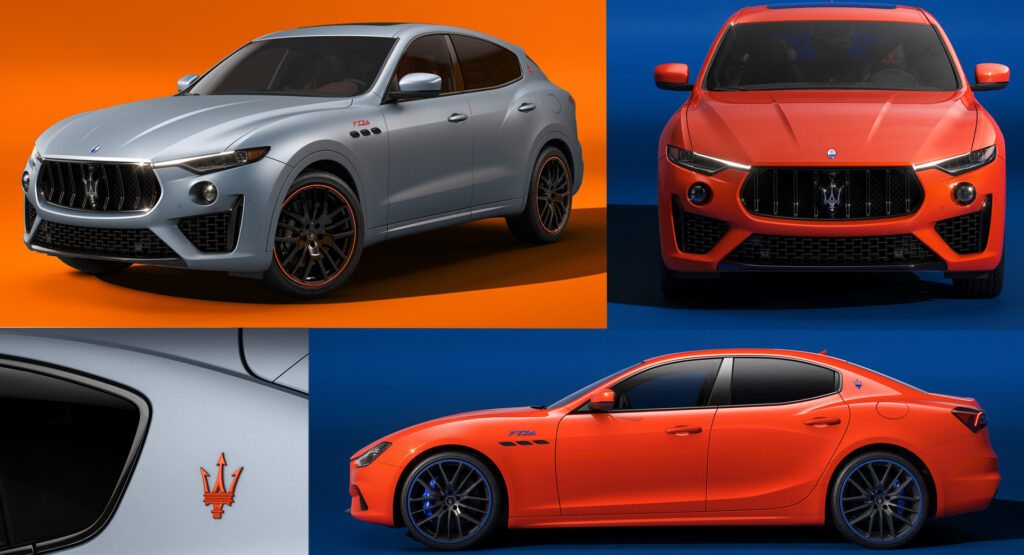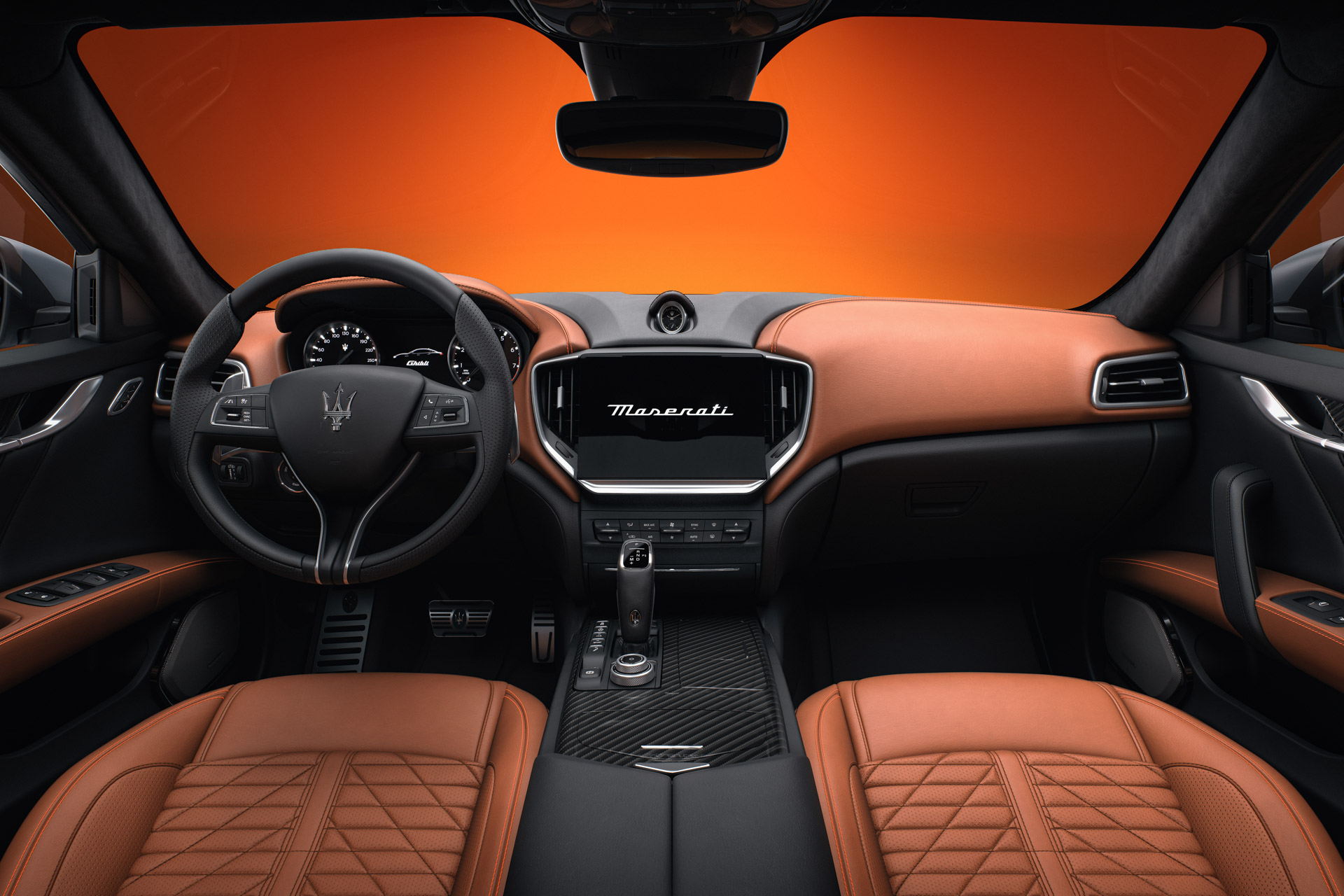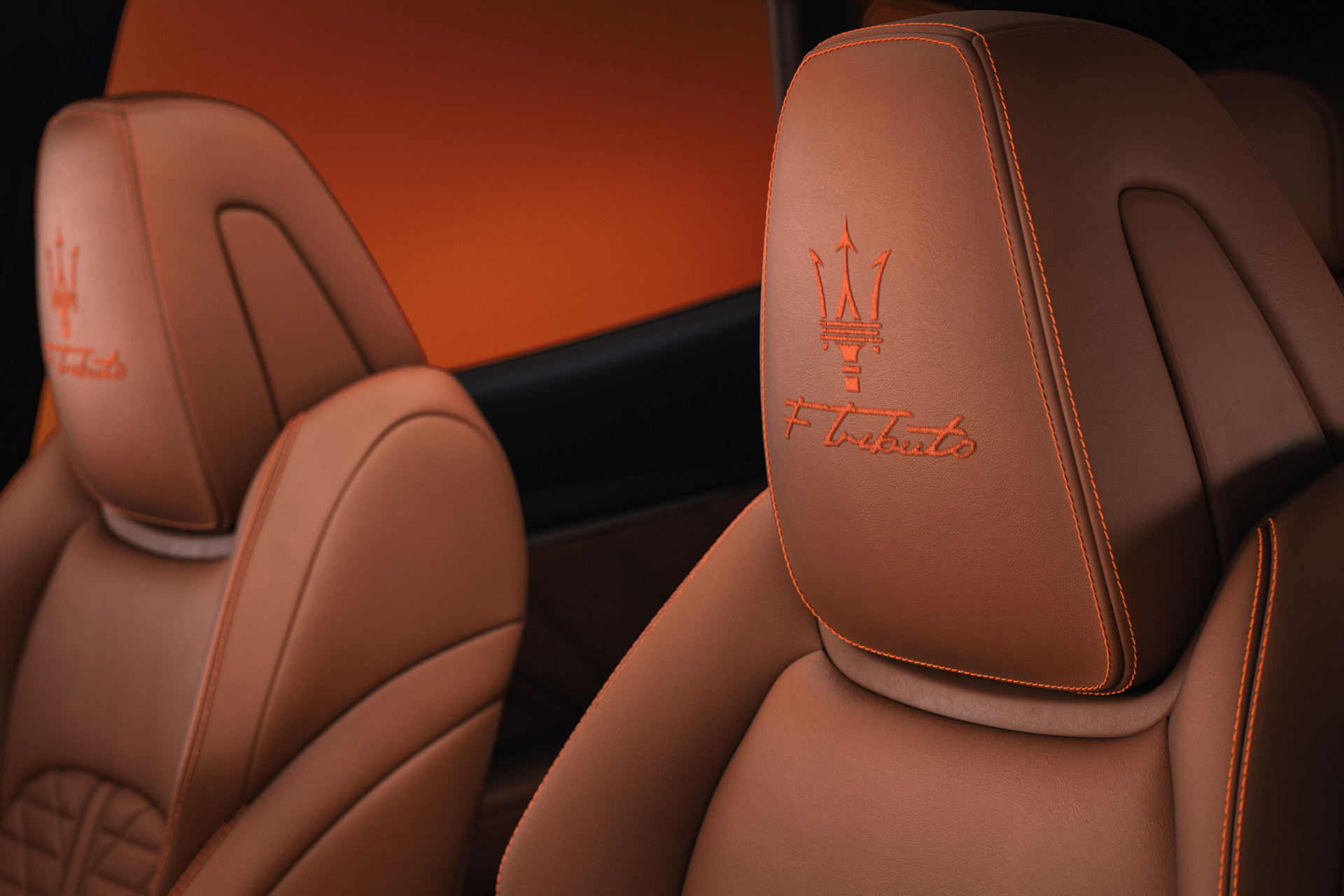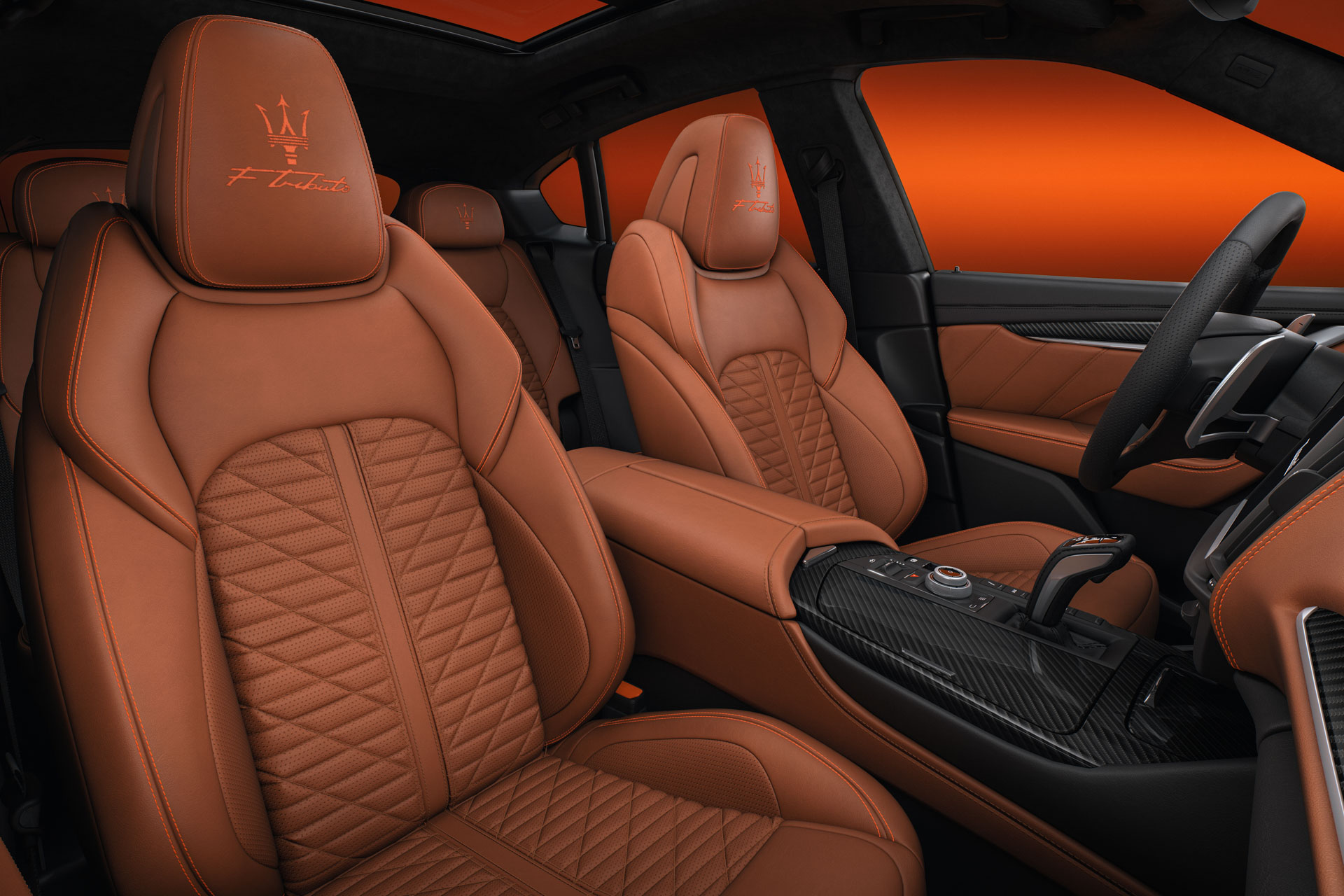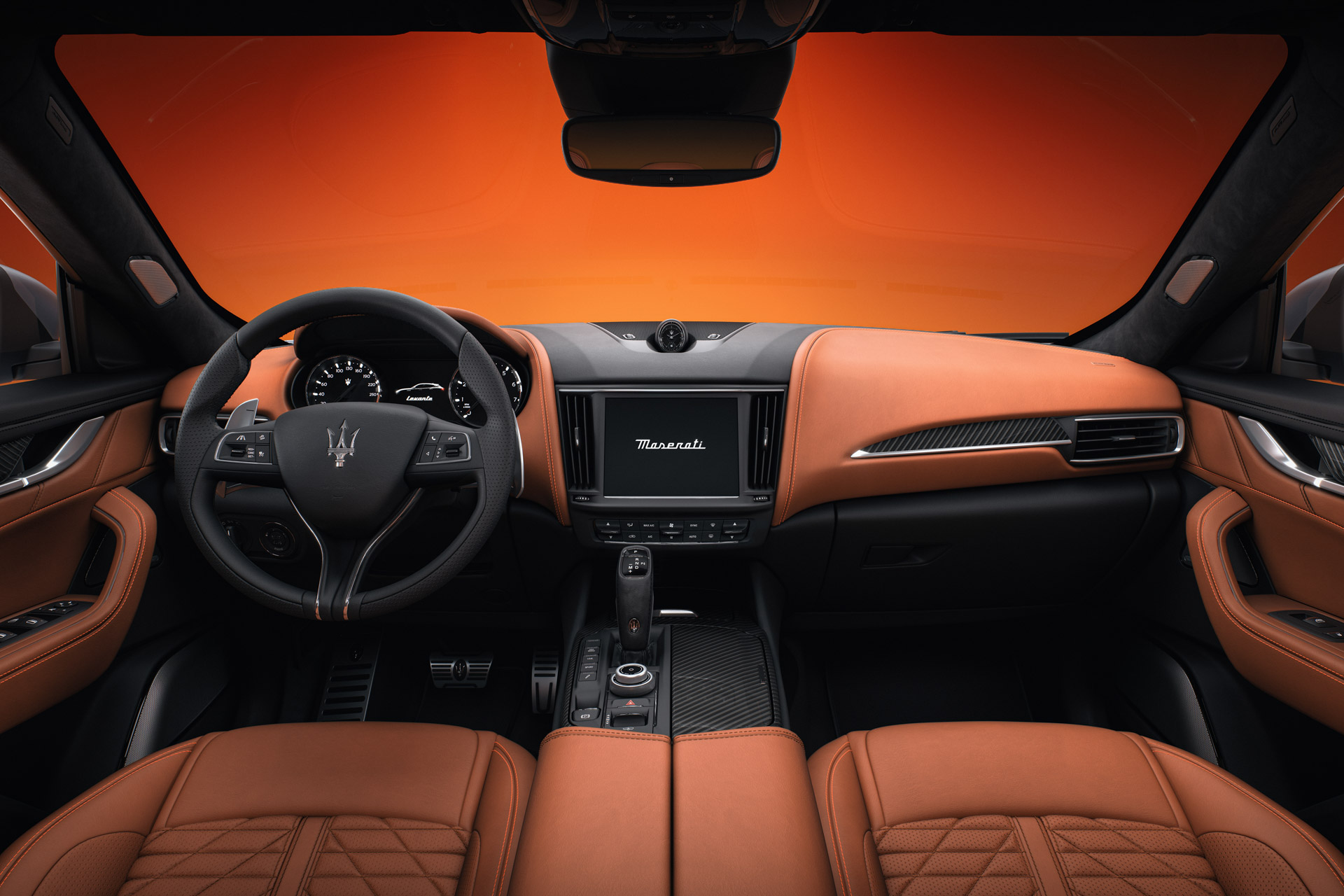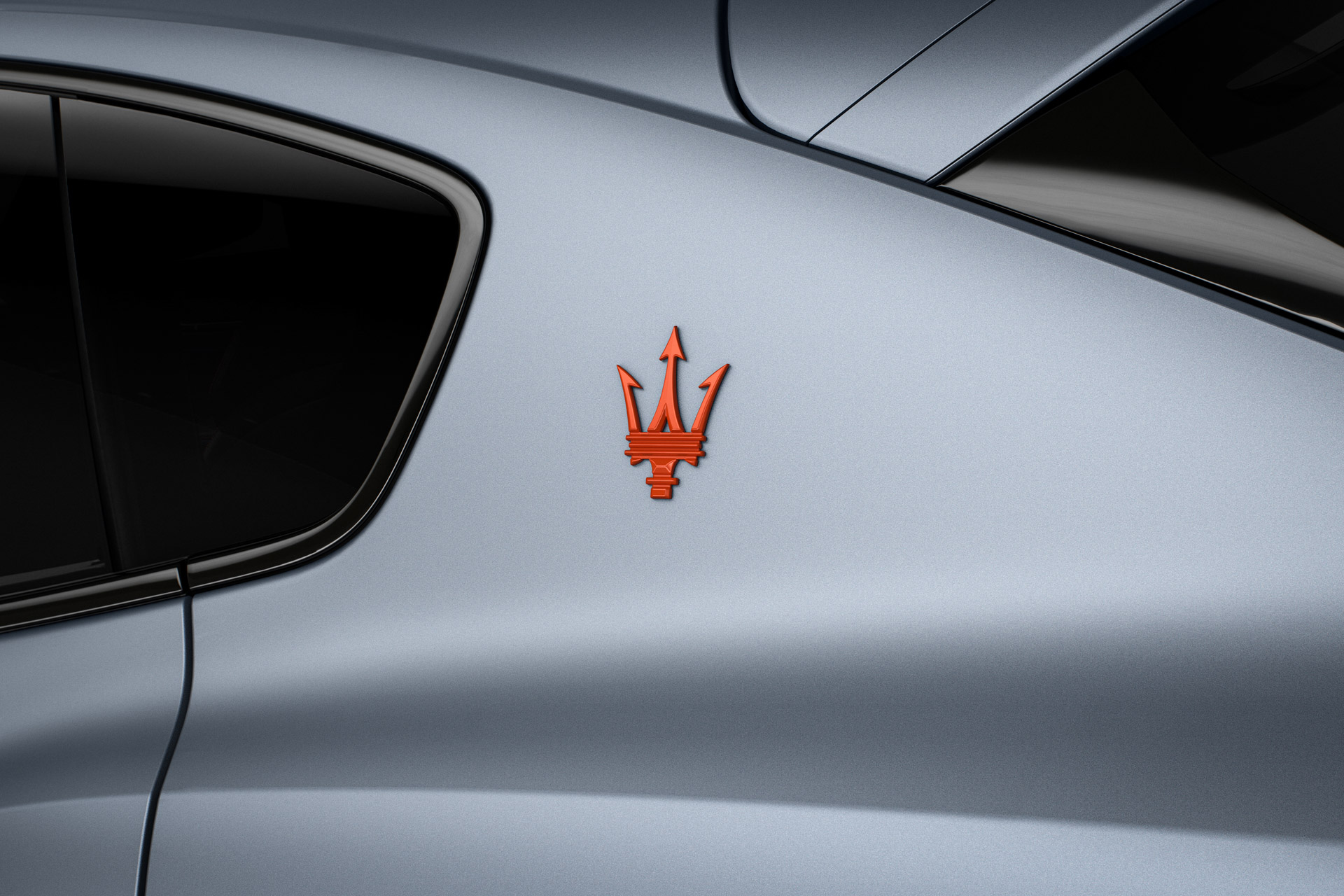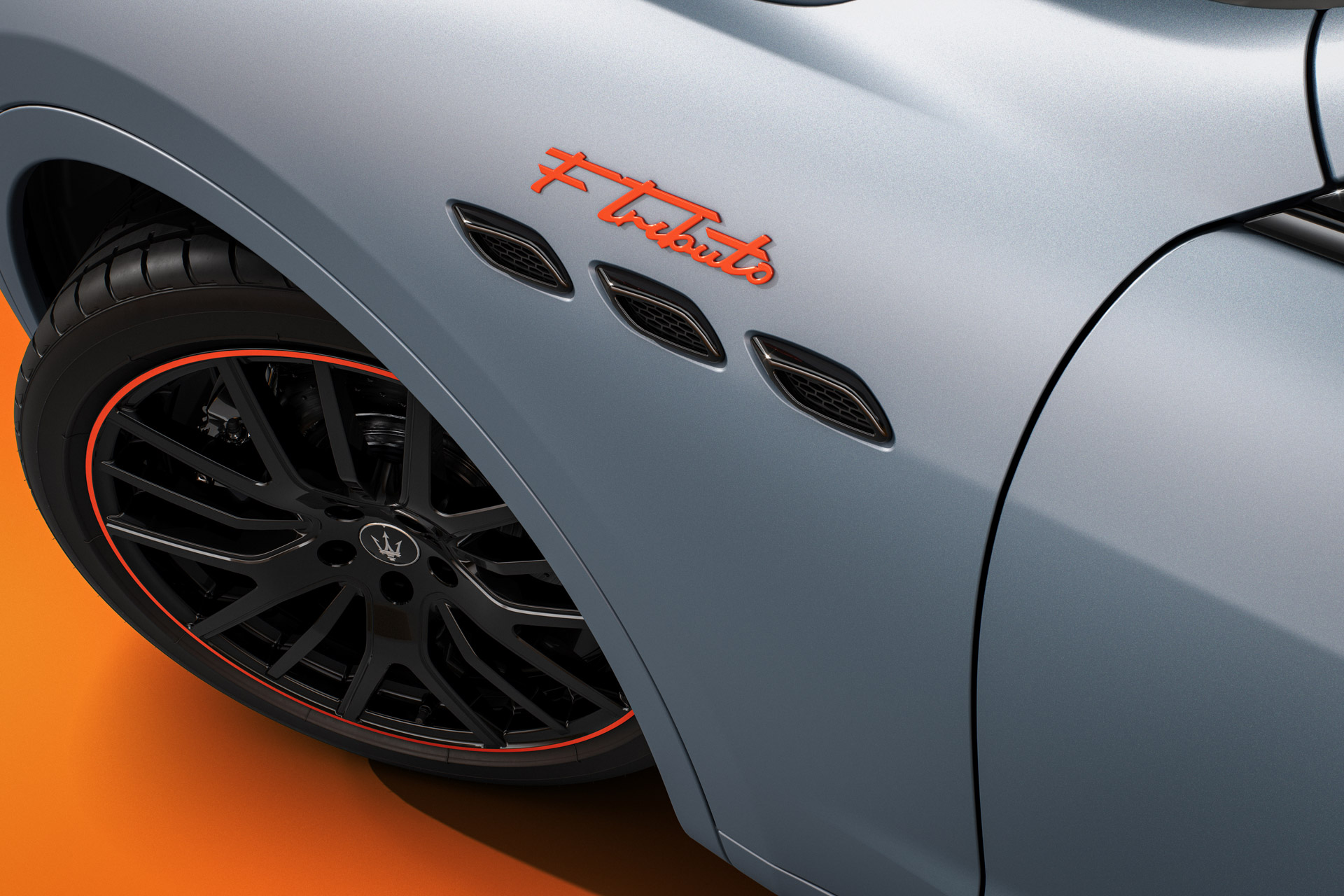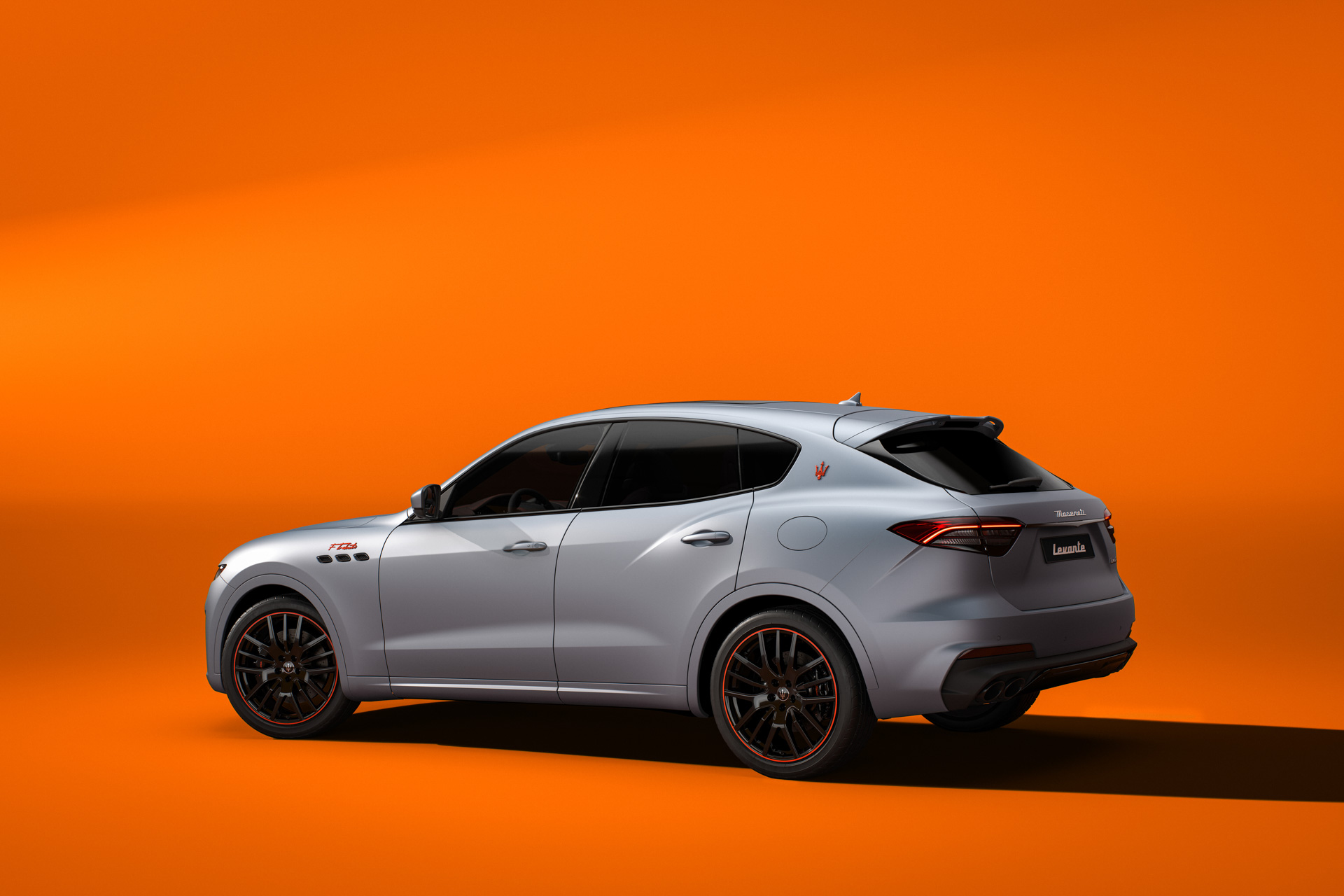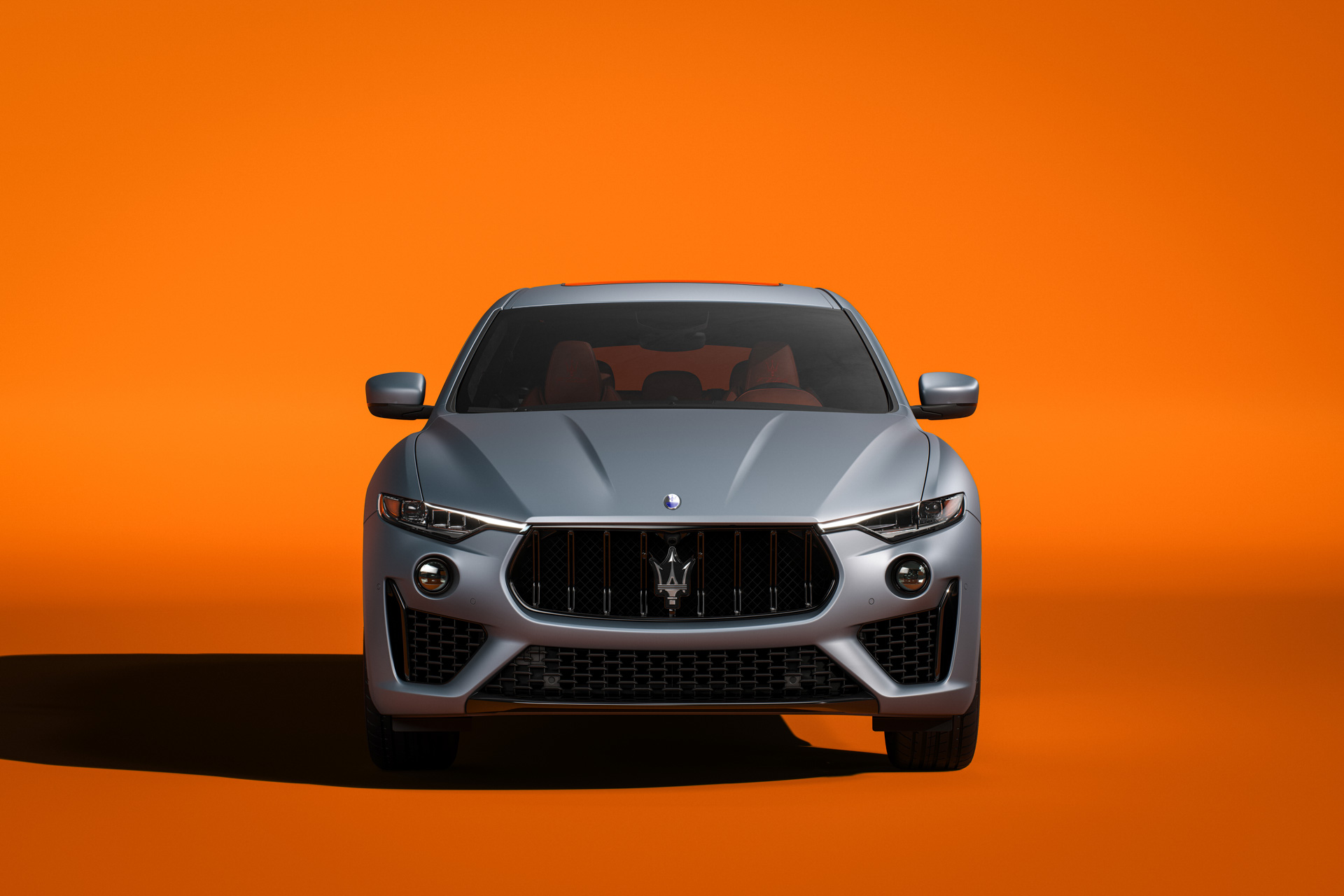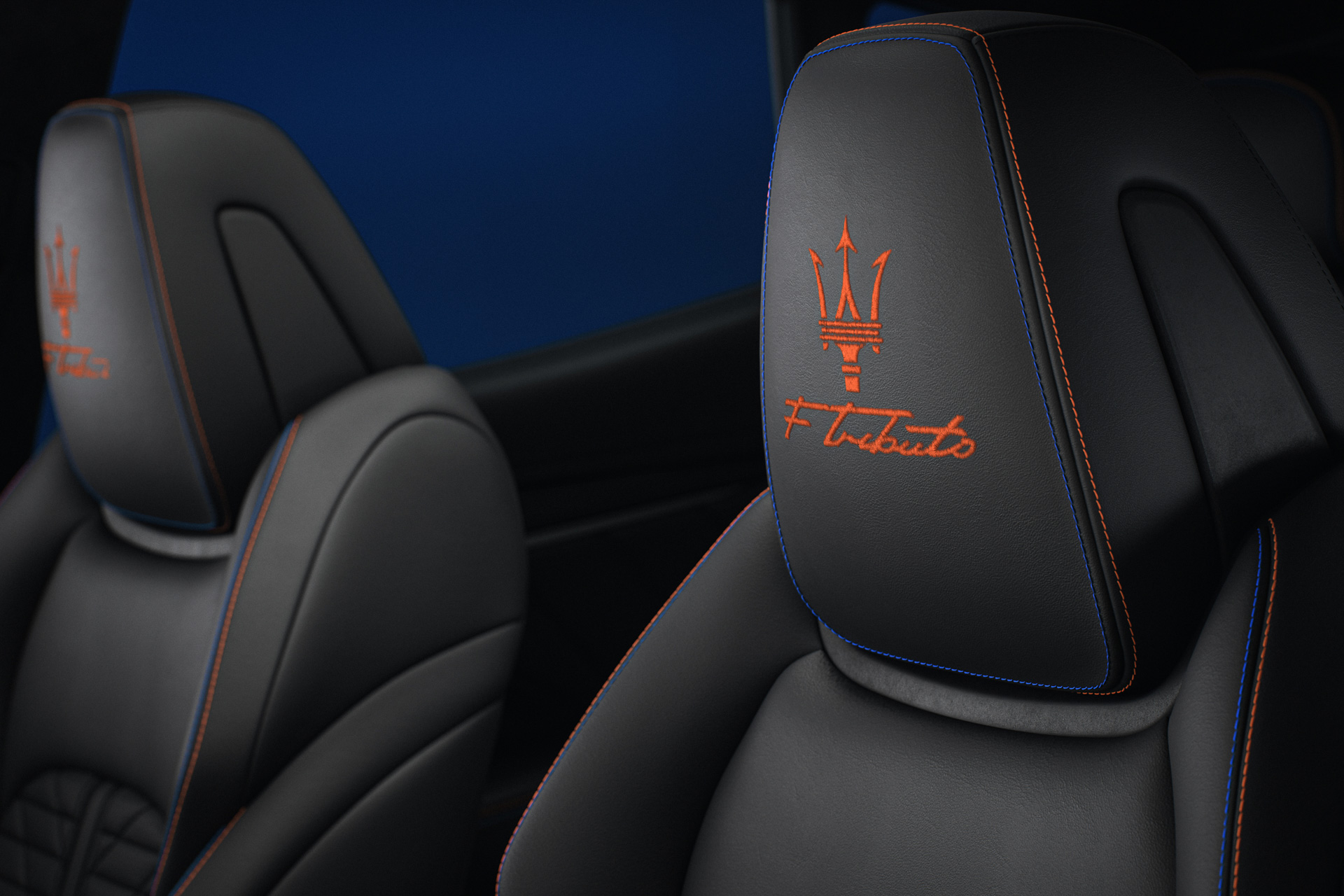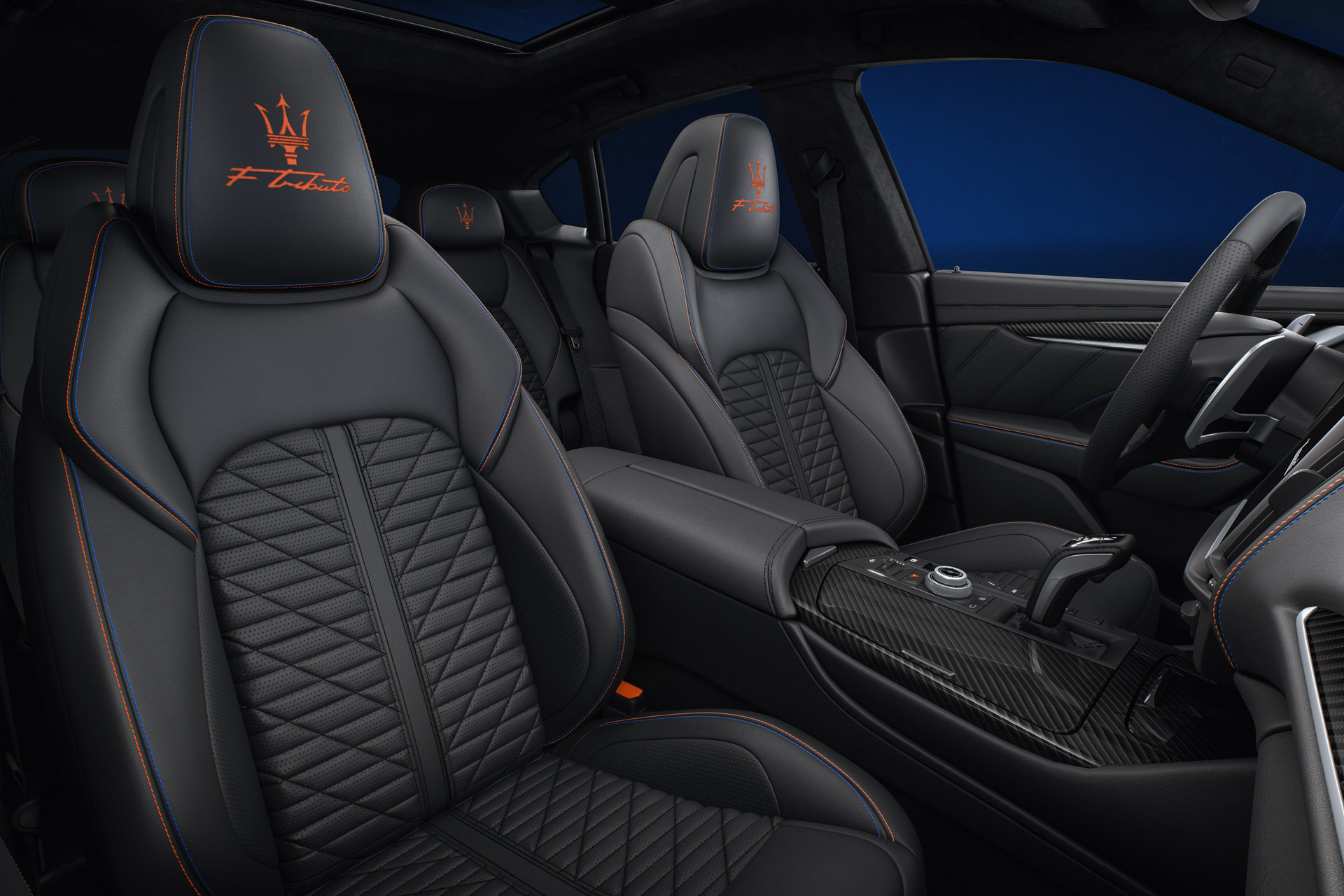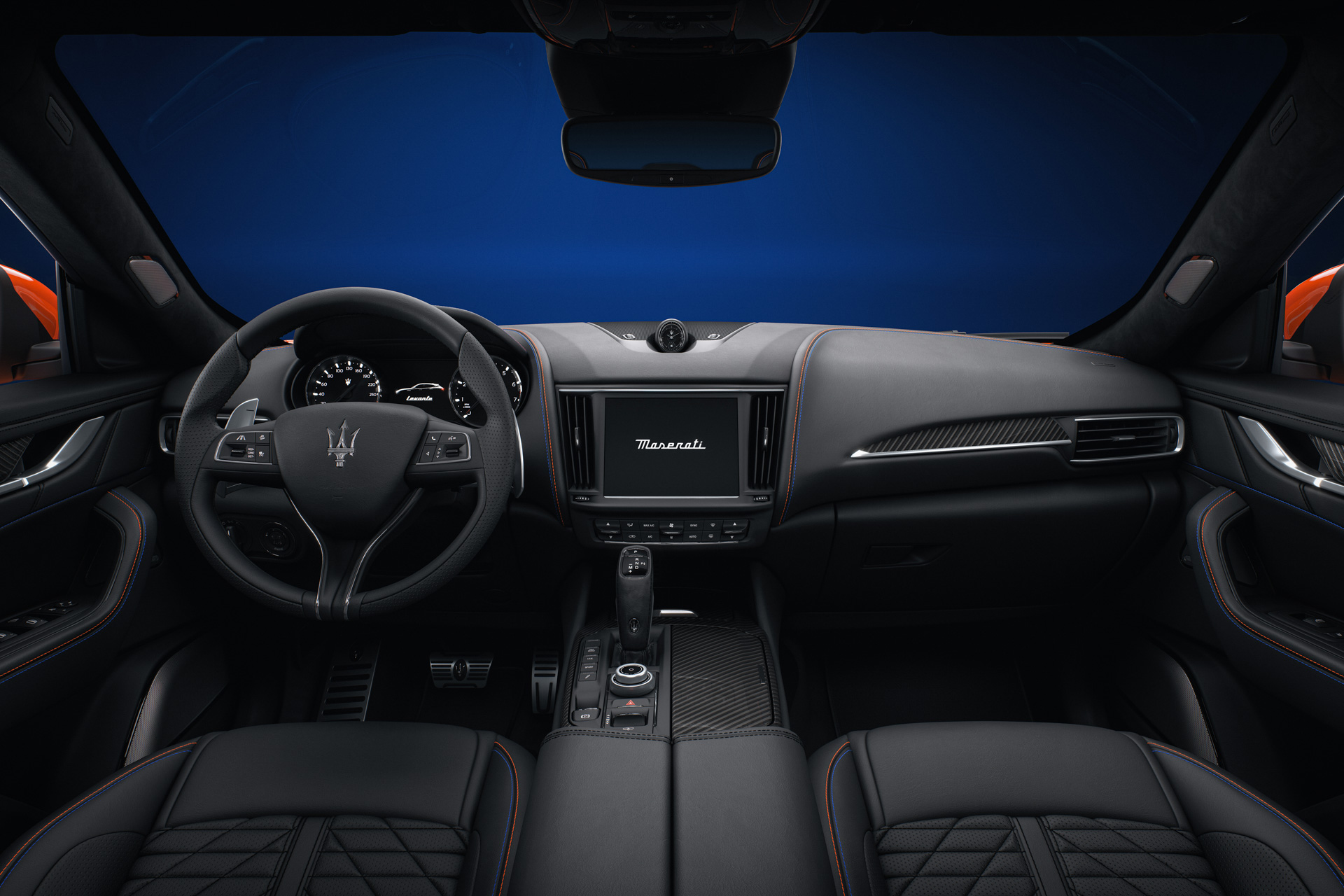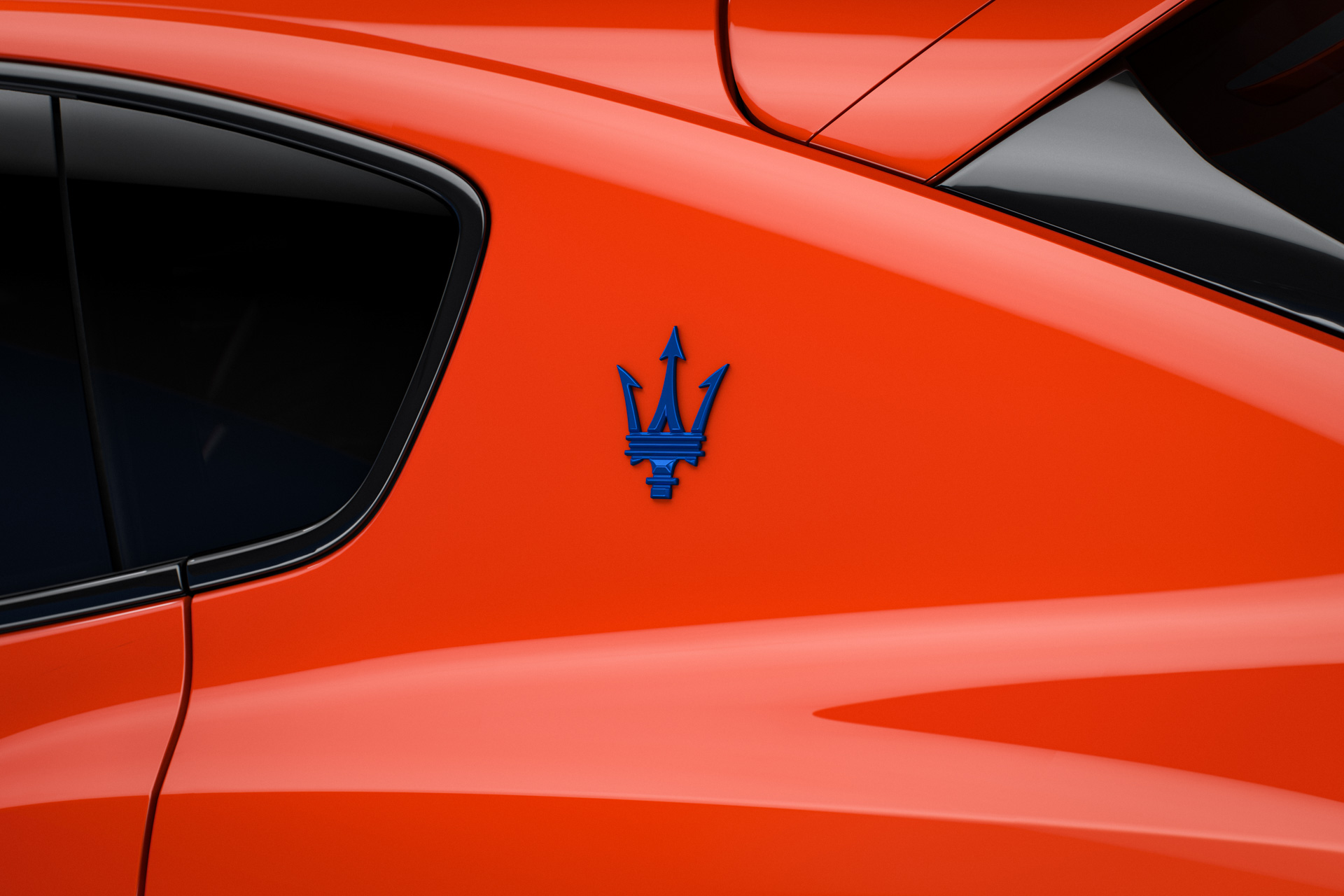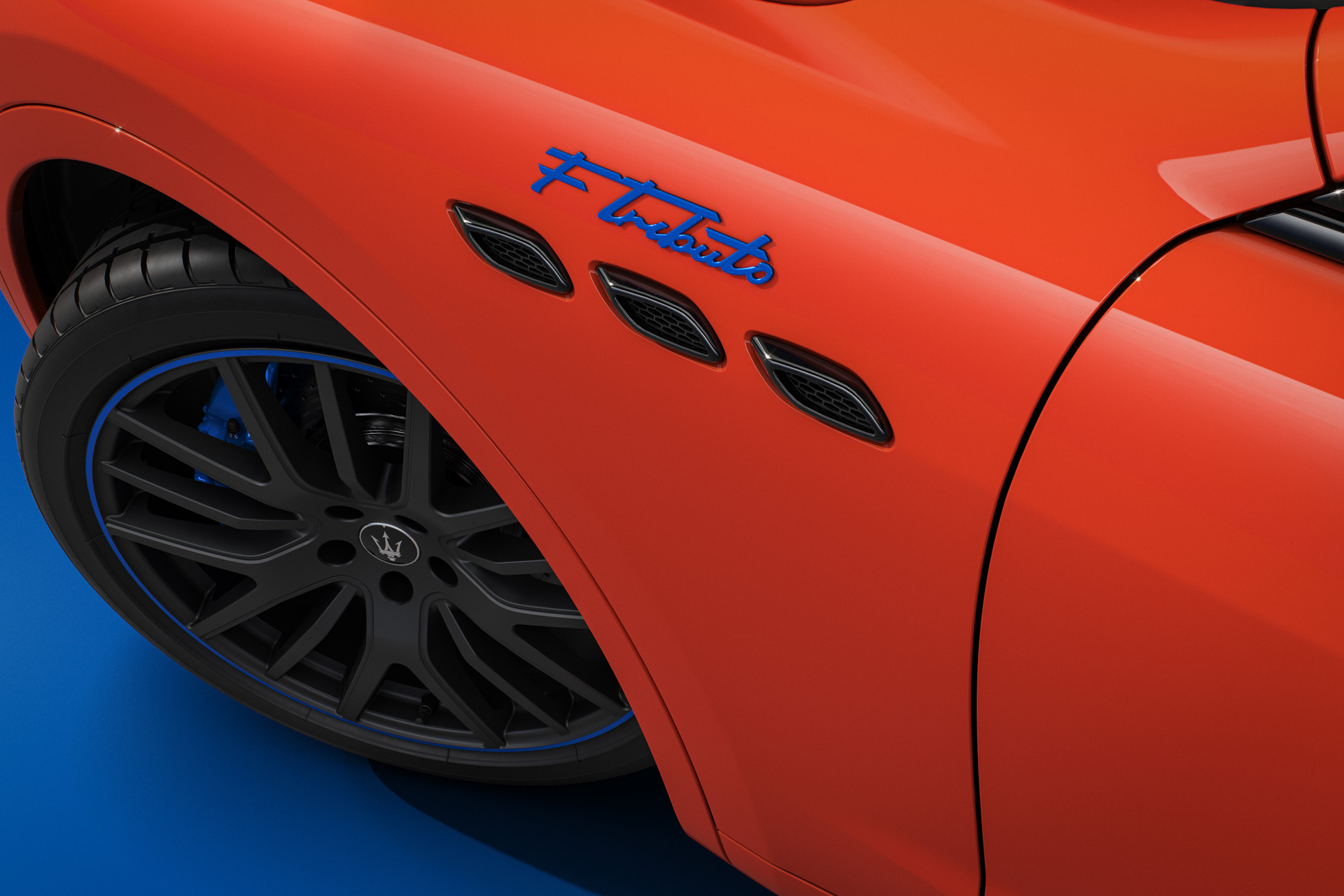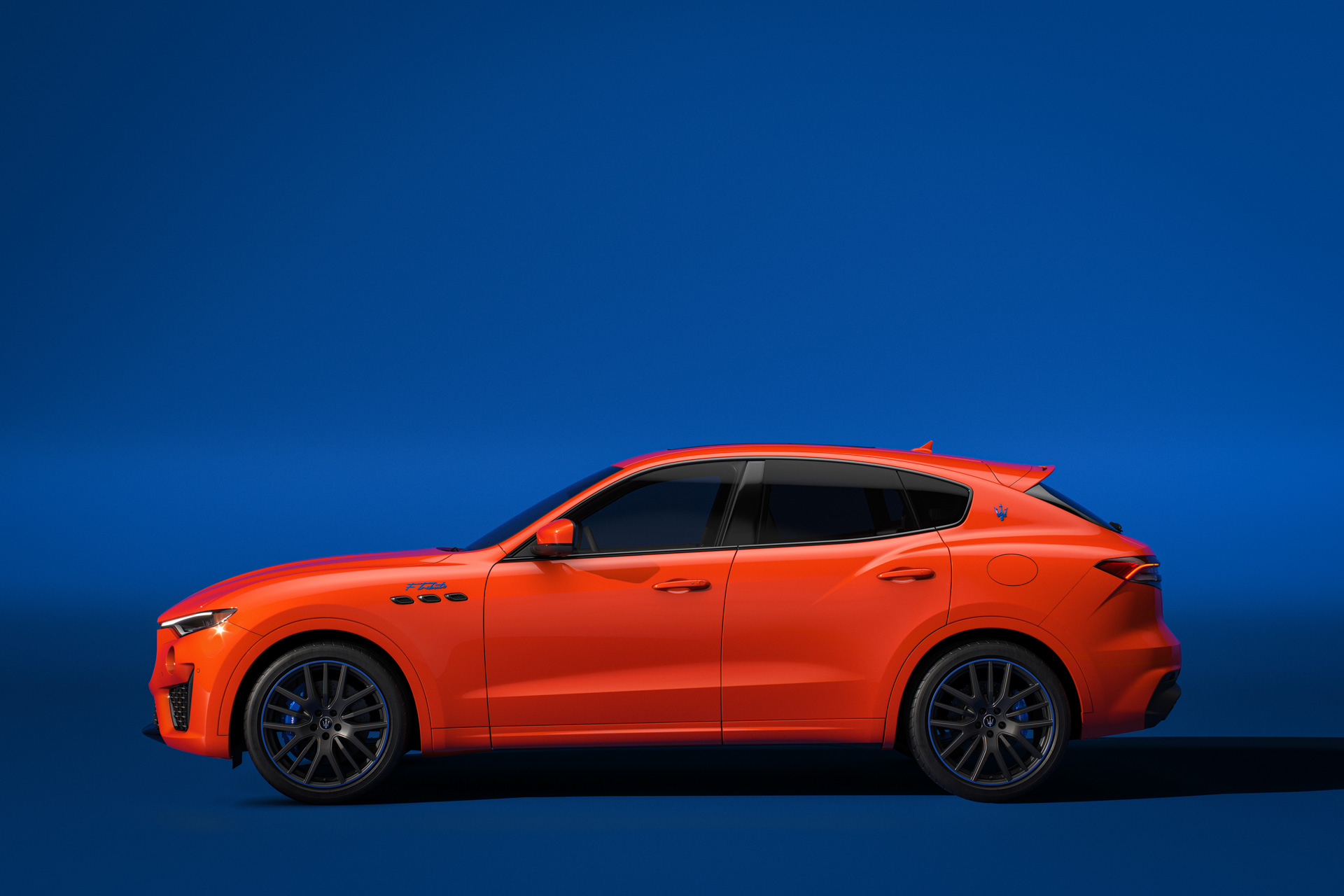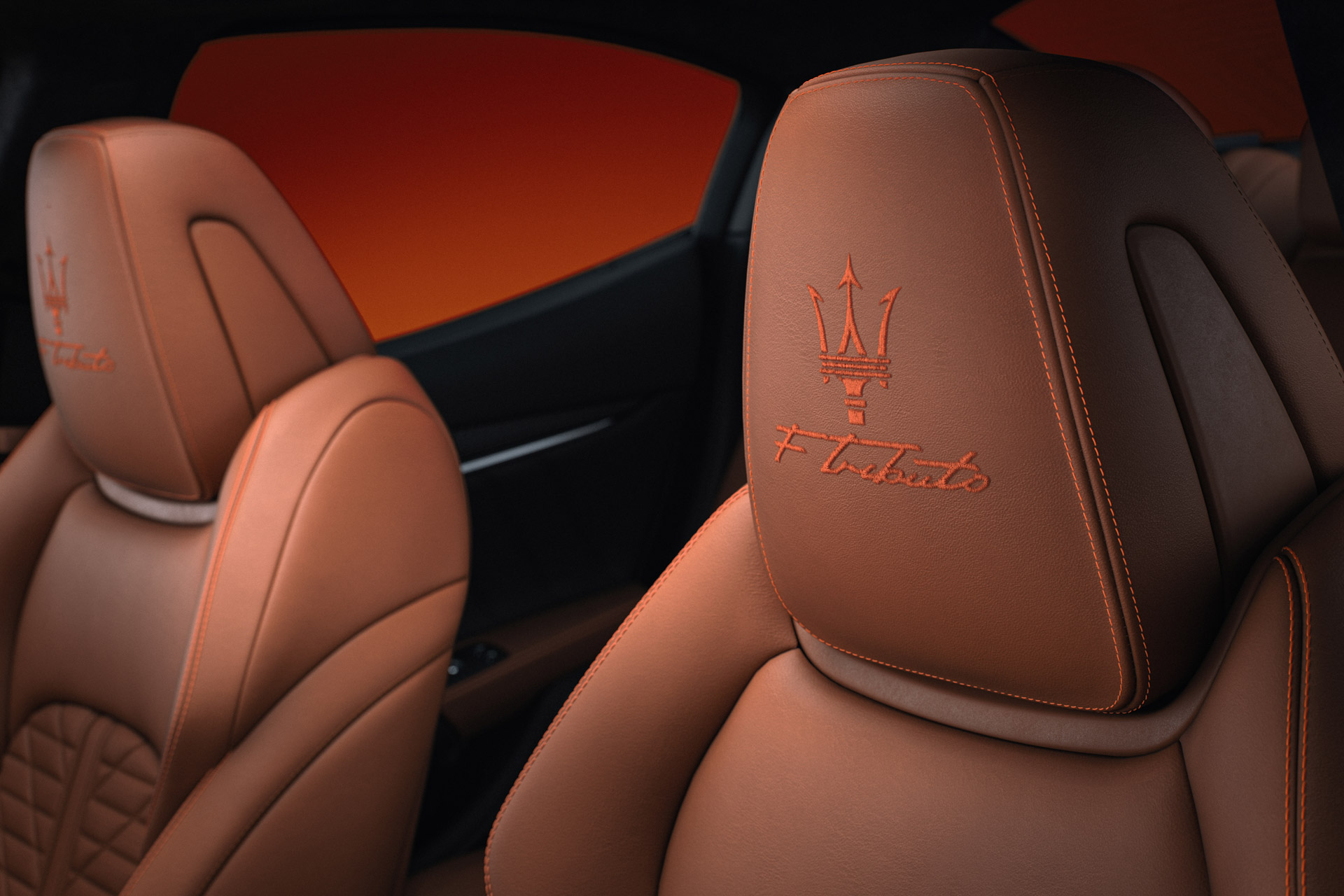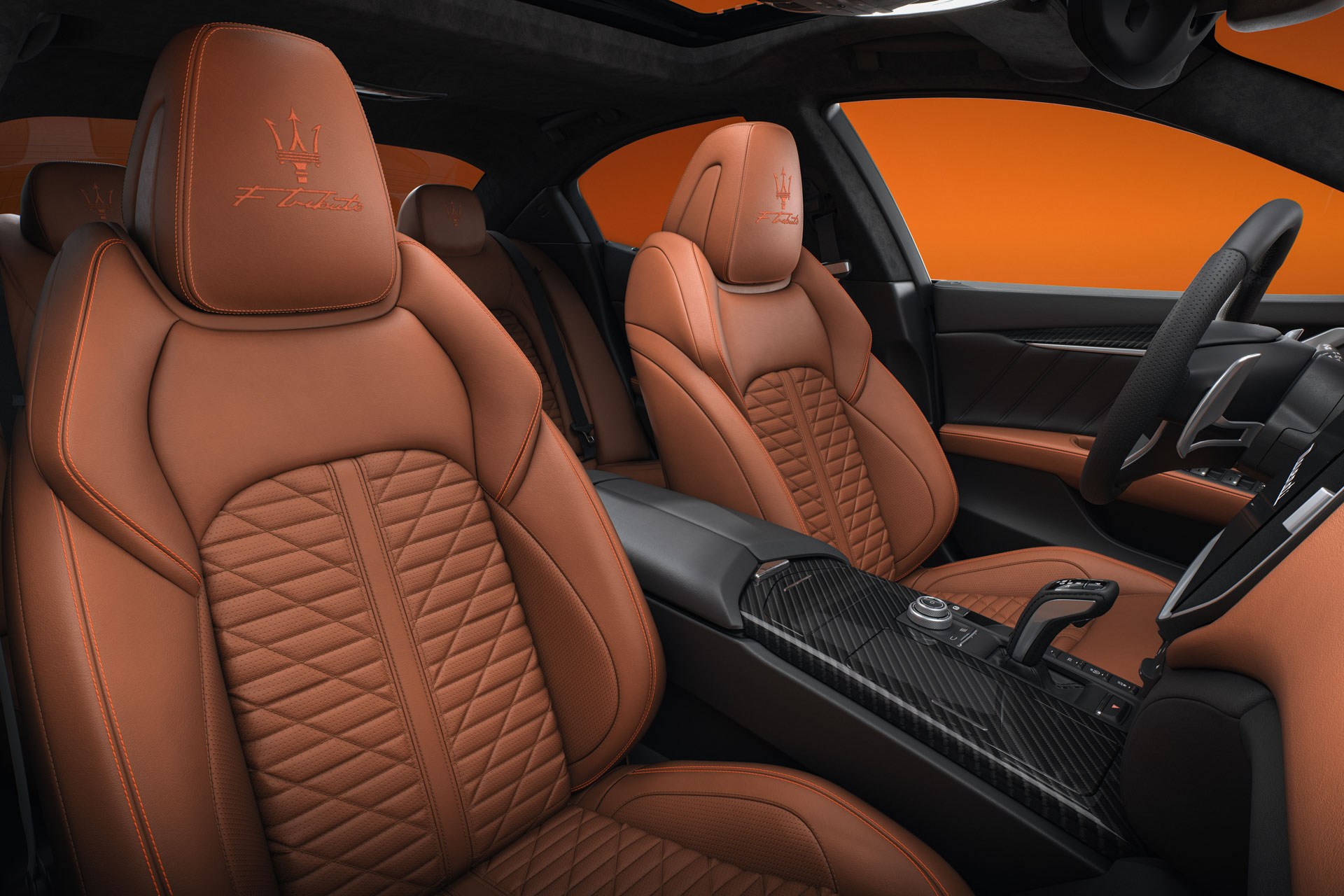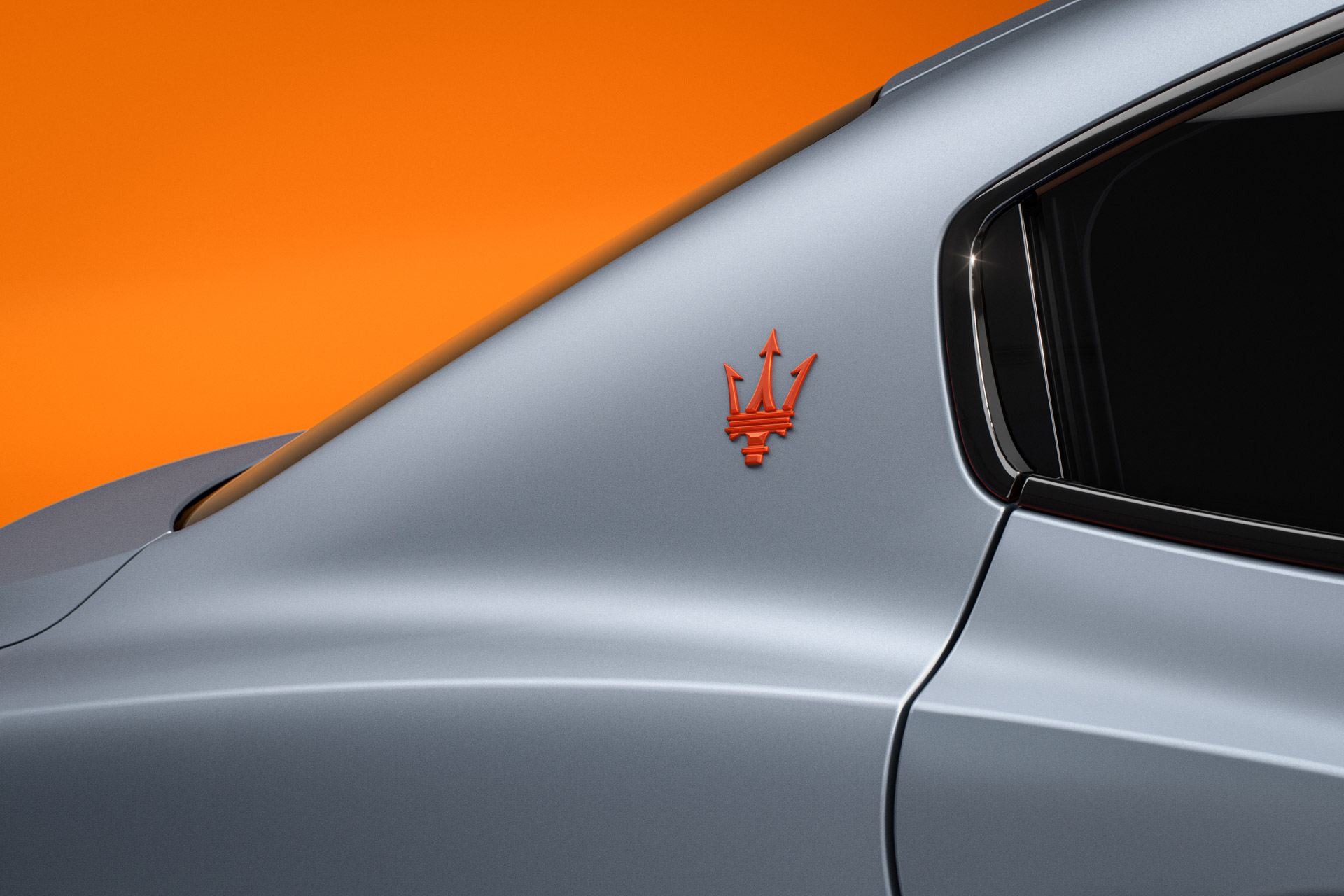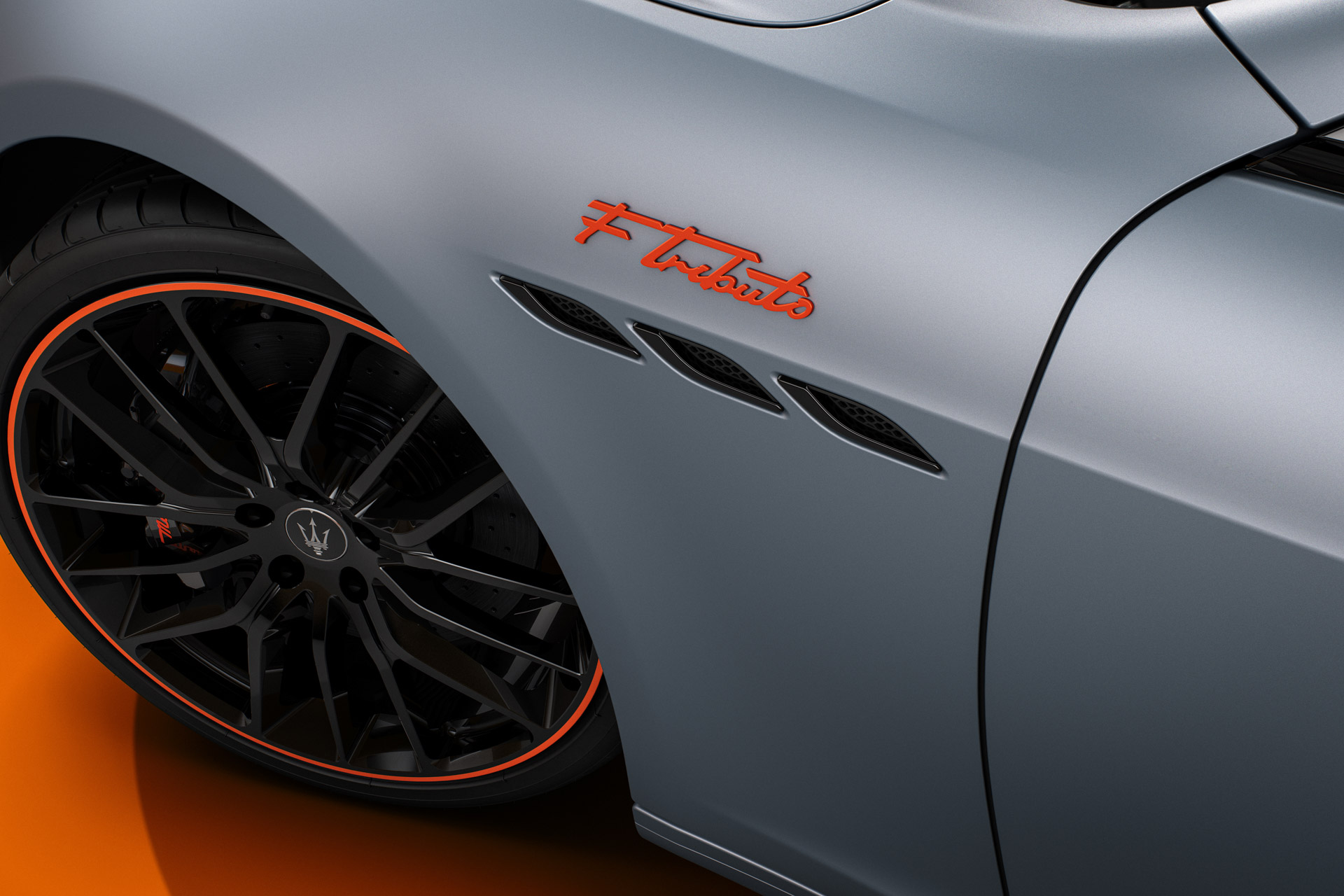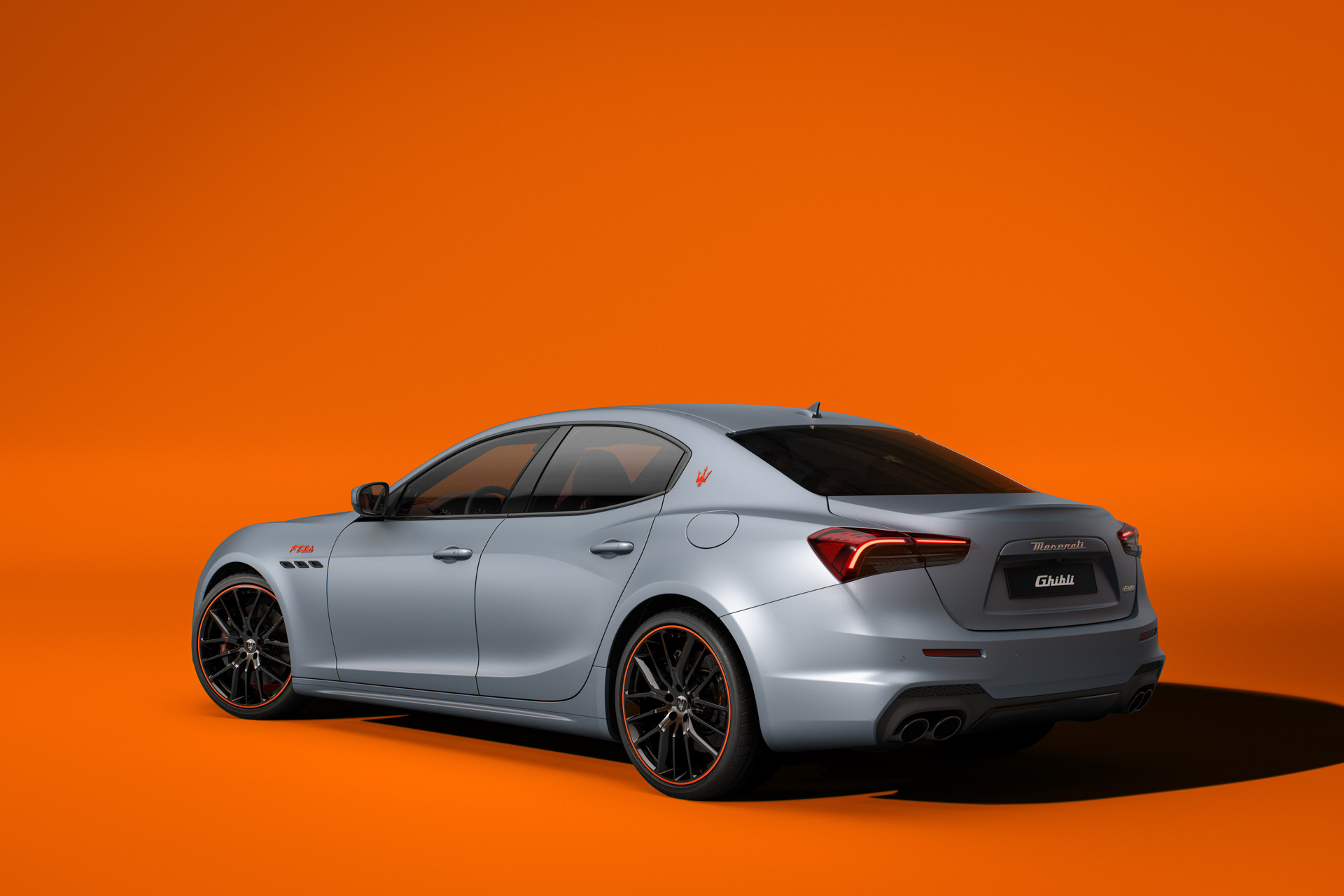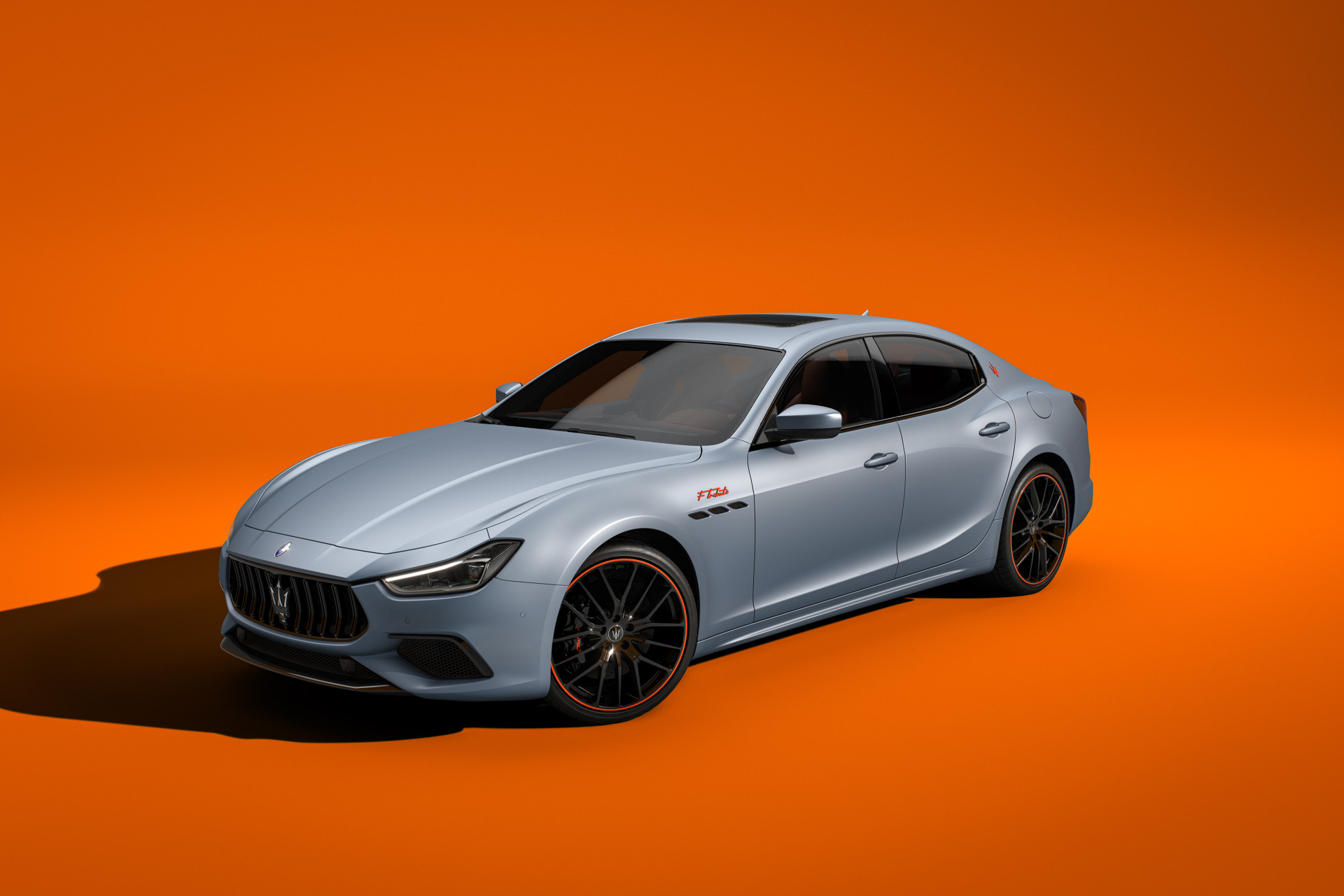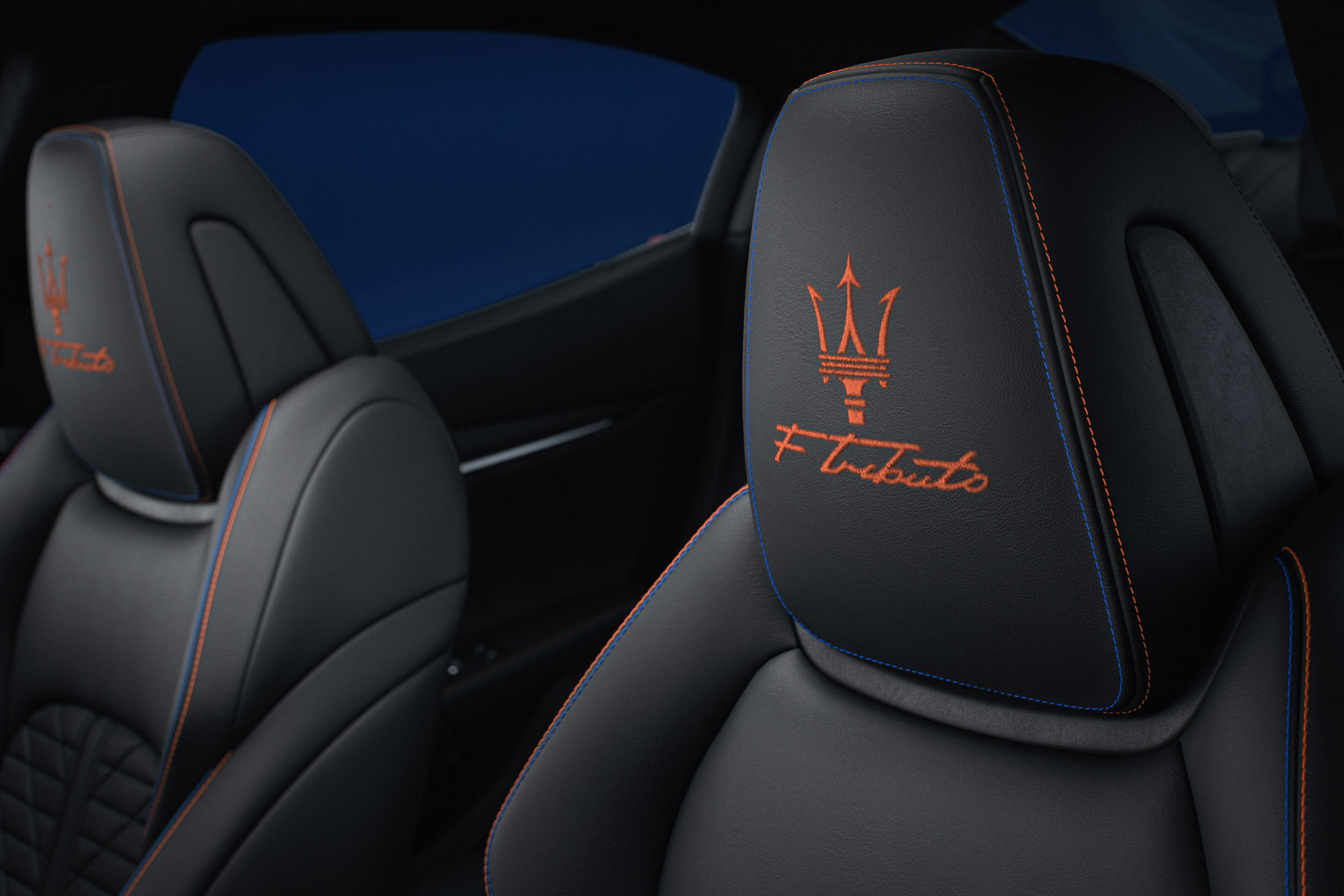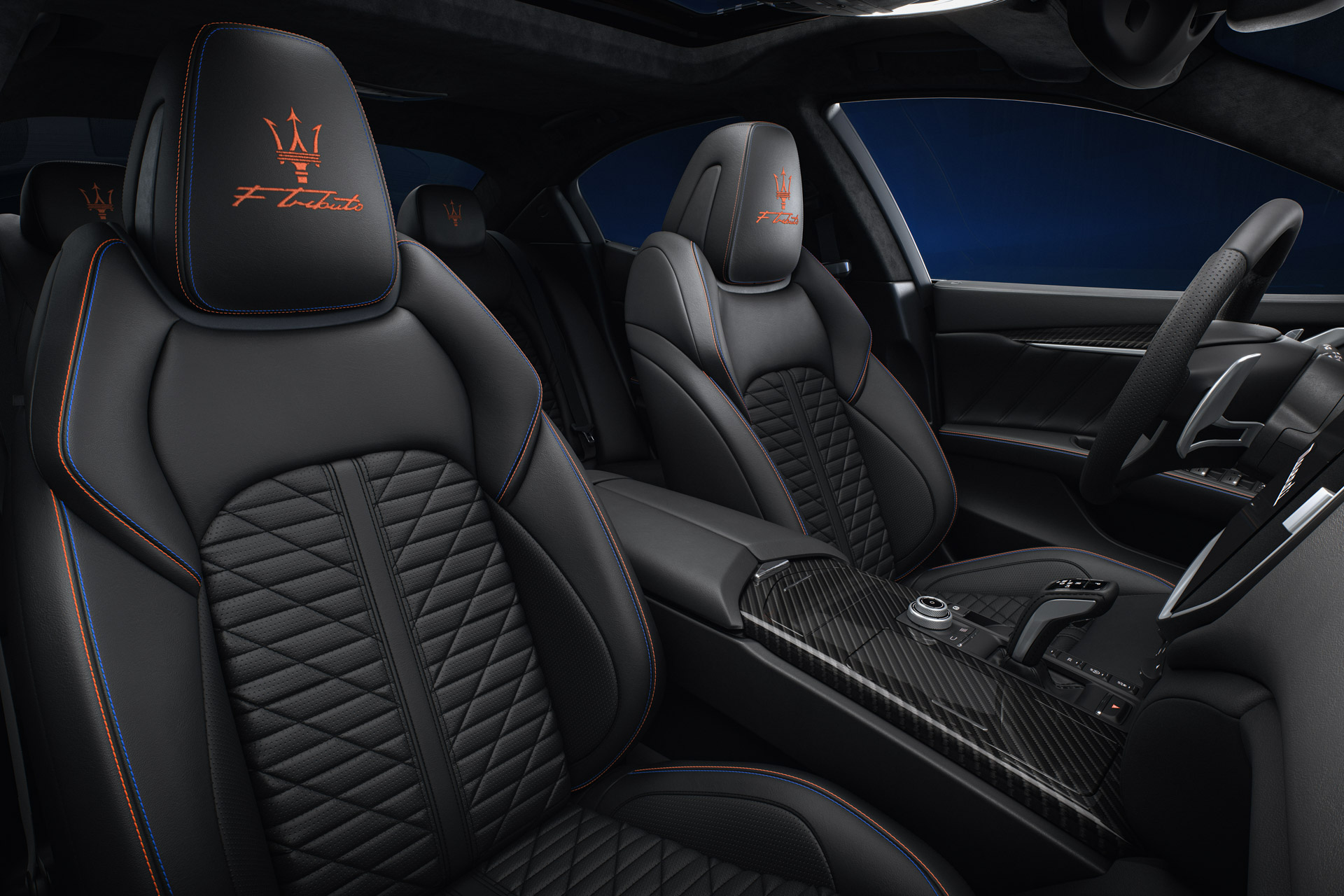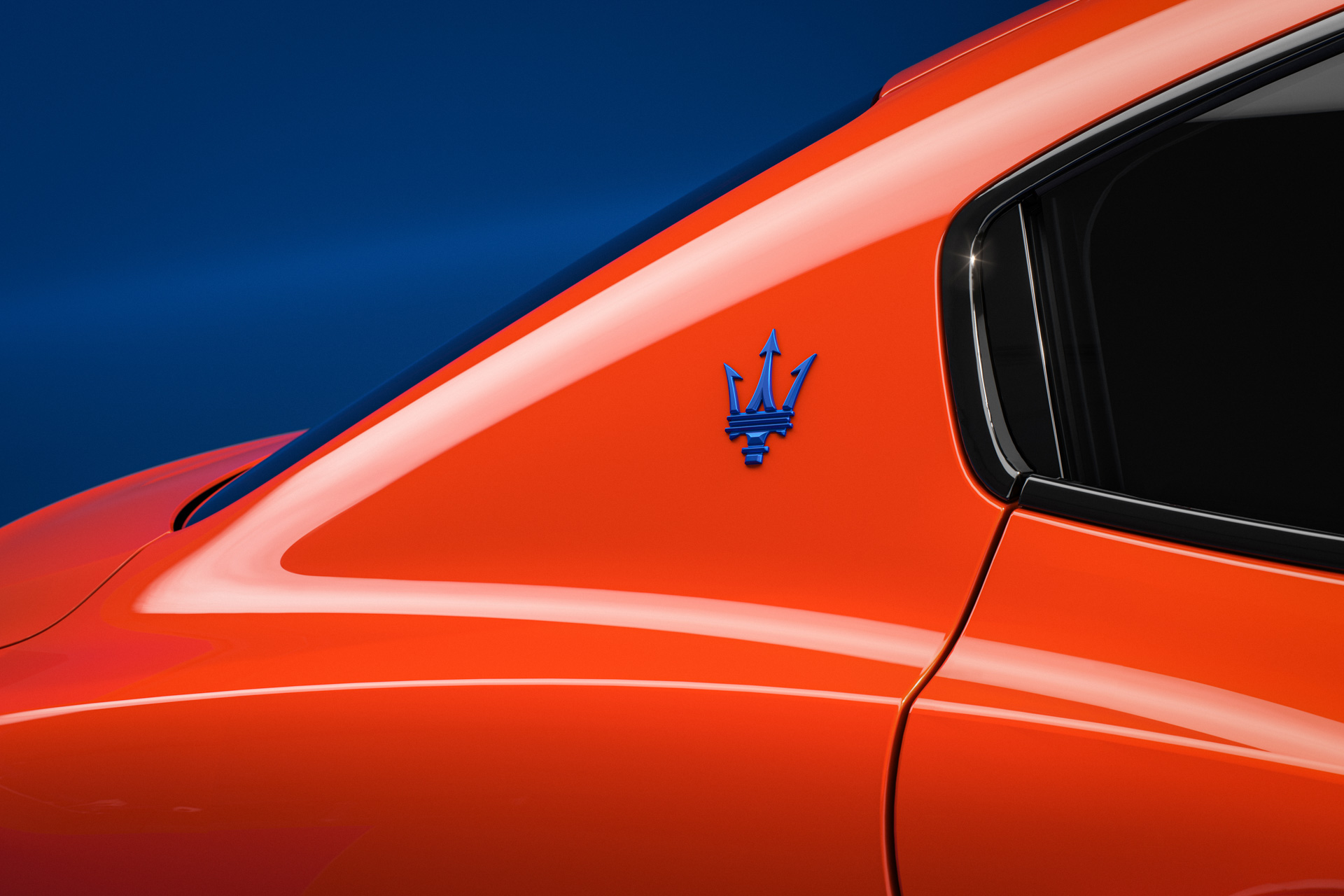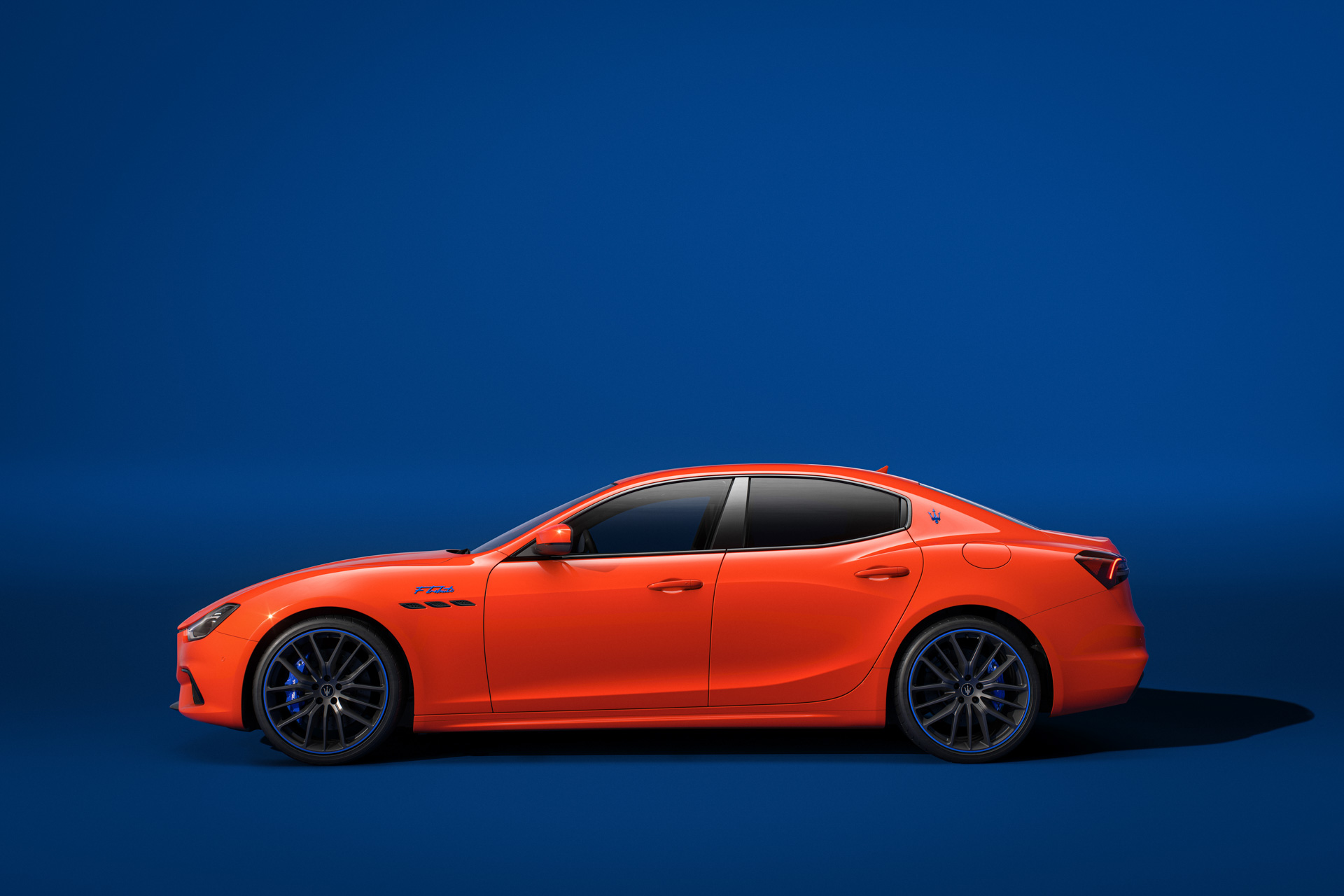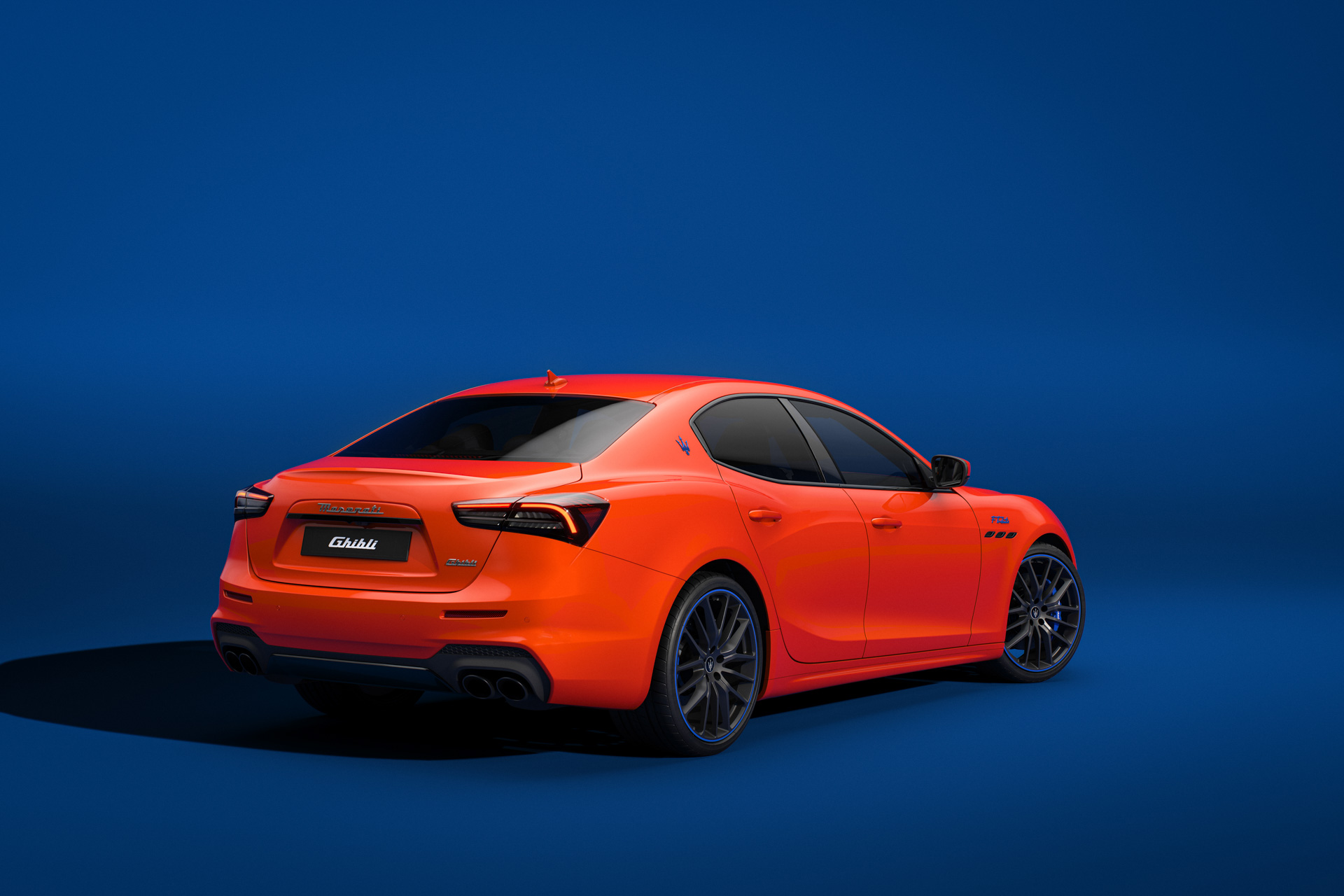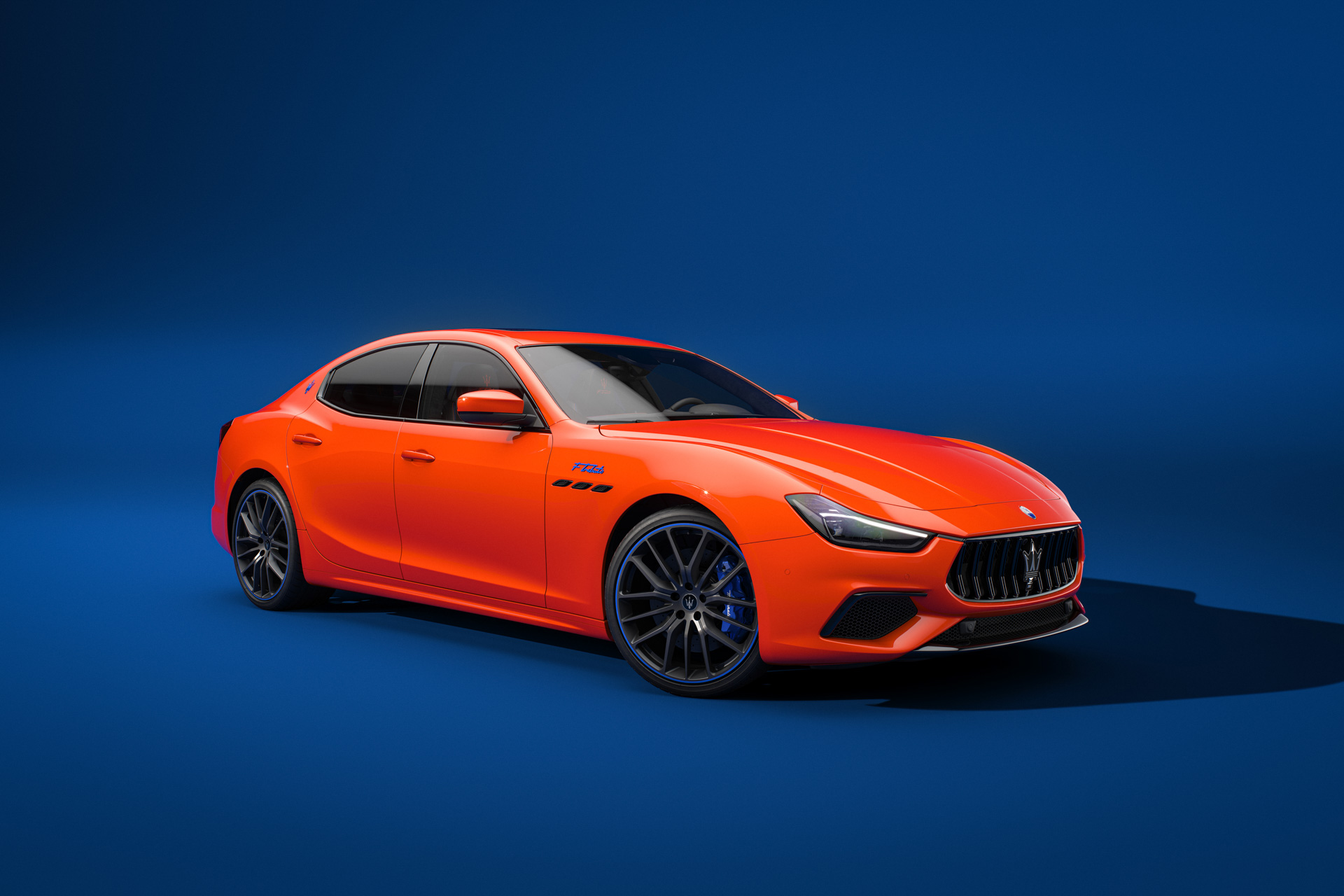If you follow F1 you’ll know the sport is missing one major ingredient, and it’s not overtaking. I’m talking about women. There are currently no female drivers this year, just as there weren’t any last year or any year since the late 1970s.
A handful of women have made it onto the grid over the years though, and Maserati is commemorating one of them with the new F Tributo Special Edition versions of the Ghibli sedan and Levante SUV. The driver Maserati is celebrating is Maria Teresa de Filippis from Italy who was the first woman to race in the F1 era.
Choose a Levante F Tributo in Arancio Devil (orange) and it comes equipped with 21-inch Antea wheels, while the Ghibli in the same color gets 21-inch Titano wheels, with both sets arriving coated in Grigio Opaco with blue detailing. Want something more low-key? Both cars are also available in Grigio Lamiera (gray) and paired with gloss back wheels, and the blue details swapped for orange. Both color schemes are matched with a choice of subtle black or showy orange full-grain leather and complemented by cobalt blue and orange stitching.
Related: Max Verstappen Wins 2022 F1 Championship After An Unusual Japanese GP
De Filippis started her motorsport career driving a Fiat 500 “Topolino” in the late 1940s, winning her first race and catching the eye of Maserati, who signed her up to race in sports cars and hillclimb events, including the Targa Florio, where she placed ninth overall and fourth in class behind the wheel of a Maserati A6GCS.
Impressive results like that eventually helped de Filippis secure a spot in an F1 car, and she made her debut at the 1958 Monaco Grand Prix driving a 250F, the same type of car Fangio had used to win the F1 driver’s title the previous year.
Unfortunately, she failed to qualify for the event, and though she took part in five F1 races during the late 1950s, de Filippis didn’t take any tinware or points home, and only managed to finish one race. But even to make it into the top level of motorsport back then, when sexism was 1,000 times rifer than it is today, is still an impressive achievement. It was another 15 years before a woman would again get behind the wheel of an F1 car in a Championship event.




